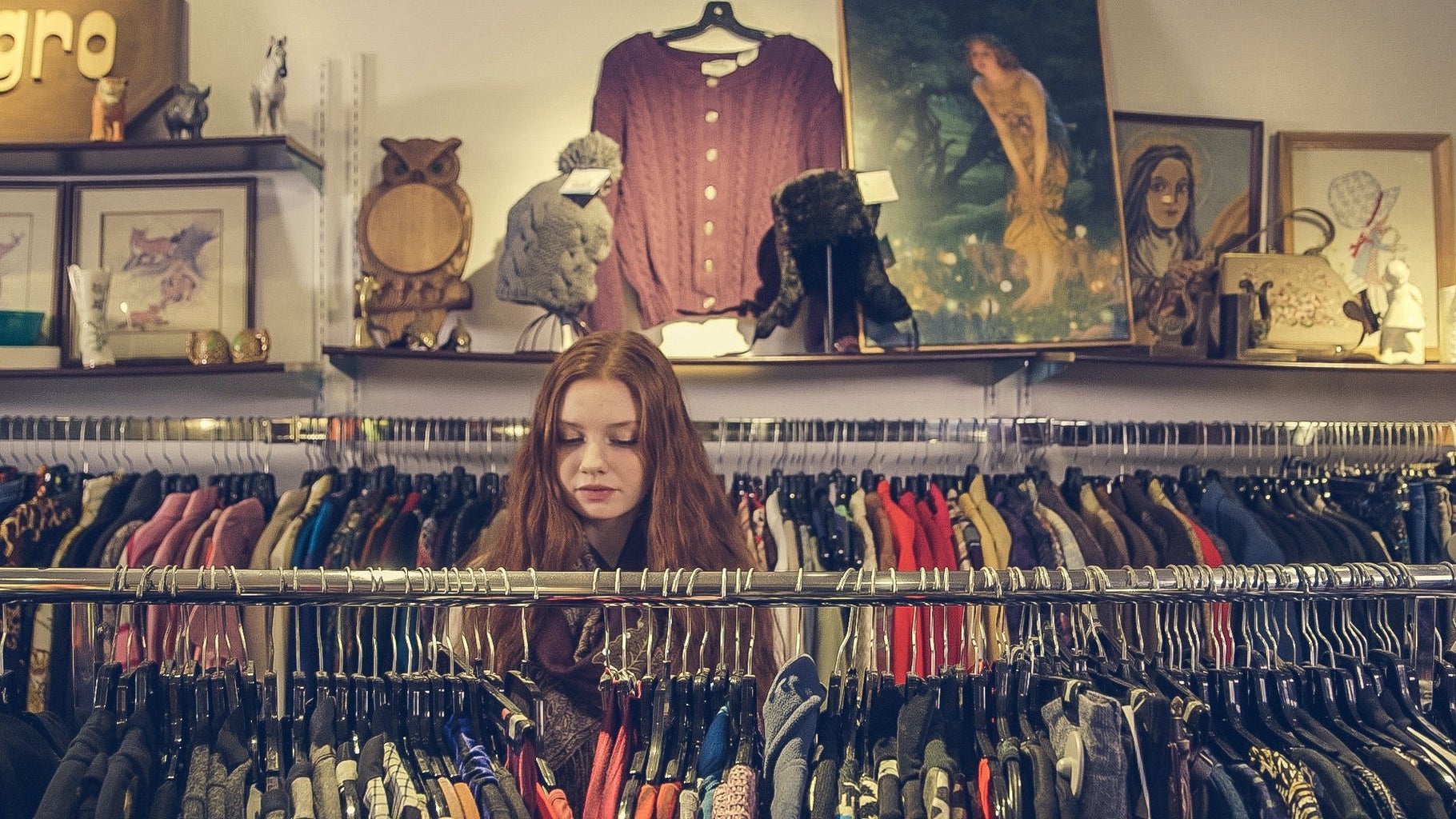What is “fast fashion?”
Fast fashion — it’s likely that you’ve heard this term circling through various news and media sources in the last few years, but what exactly is it? Fast fashion refers to inexpensive clothing produced rapidly by mass-market retailers in response to the latest trends. For the average college student, this might seem appealing, as it provides a way to stay up to date with current trends while not breaking the bank. Forbes Magazine reported that on average, 72% of college students purchased merchandise from fast fashion brands in 2022. However, these practices produce major production, occupational, and environmental issues that I will discuss in this article. But don’t worry — I will also provide advice on how we as a generation can make better decisions and create different habits.

Is “fast fashion” really that bad??
The United States consumes more clothing and textiles than any other nation annually, which amounts to almost 3.8 billion pounds. From an ethical standpoint, fast fashion disproportionately impacts low-income countries and countries that lack sufficient labor laws. During production, employees are regularly exposed to respiratory and musculoskeletal hazards with can cause severe problems down the line, including lung disease, cancer, endocrine damage, adverse reproductive and fetal outcomes, accidental injuries, and death.
Not only is 90% of the world’s clothing produced in these countries, but the used clothing that is not sold at second-hand stores gets exported back from the United States. Approximately 500,000 tons end up back in these low-income countries in landfills. This creates large public health hazards due to the waste overwhelming waterways and local sewage systems.
It is also important to consider the fabrics that our clothing is made of. Have you ever noticed how much of your clothing is composed of polyester? From rain jackets to sweaters to skirts, polyester is in everything. In fact, approximately 60% of the world’s textiles are made with polyester, which causes a threat to the environment. Polyester is a synthetic fiber that is derived from oil, a natural resource that is strenuous to collect and process. Additionally, these fibers do not biodegrade and will sit in landfills for generations, or be broken down into microplastics that infest our oceans and harm marine wildlife.
Here are some sustainable practices that I use — and you can too!
- Thrifting
-
This has become increasingly popular with Gen Z, but it is easier said than done. I have frequently gone into the Goodwill, Salvation Army, or other secondhand stores and become lost in a sea of “junk.” However, don’t get discouraged. There are a few staples that I always seem to find; belts, jackets, and button-down tops are usually my go-to’s. I look specifically for clothing made from good materials that can last a second lifetime.
- Online thrifting
-
Online thrifting is also a great option for finding cute clothes in a more sustainable way. Many sites, including Poshmark, Thredup, and Curtsy, provide a great way to both find deals and reduce waste, all without leaving the house.
- DIY
-
DIY, baby! Give clothing a new life by giving it a little TLC. Try cropping sweaters, dying t-shirts, or ironing on patches to jeans or jackets.
- Sustainable Fabrics
-
If thrifting isn’t for you, shop for clothing made with sustainable fabrics. I know that it’s nearly impossible to buy solely used clothing, so when buying new clothing try to buy pieces made with materials including recycled polyester or biosynthetic fibers.
- Reduce Consumption
-
Possibly the easiest thing you can do is ask yourself a few questions. Do I have something like this already? Will this still be in style a few months from now? If you find yourself going for pieces similar to items you already have or that you’re only going to wear for a few months, then it may be best to pass them up.
With all that being said, I hope you consider this advice next time you are at the mall or shopping online. Remember that your actions matter and your decisions can help lead to a brighter future for both society and the environment.
Can’t get enough of HC UMass Amherst? Be sure to follow us on Instagram, listen to us on Spotify, like us on Facebook, and read our latest Tweets!



